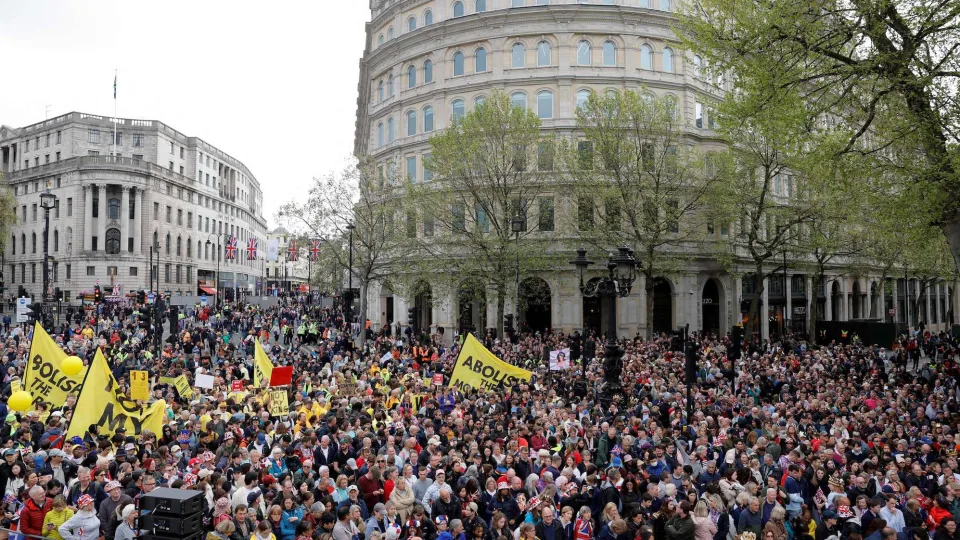Throughout the ceremony, we’ll hear 12 newly commissioned pieces of music created by composers around the UK and the Commonwealth and specially chosen by the King.
The music would be directed by Andrew Nethsingha, and the Coronation Orchestra would be conducted by Sir Antonio Pappano. Welsh bass-baritone Sir Bryn Terfel mentioned in an earlier piece, and South African soprano Pretty Yende, are among the performers. Peter Holder would be their organist. There would be an additional music by composers such as George Frideric Handel and Sir Edward Elgar.
The Archbishop of Canterbury has acknowledged the multiple faiths observed in the UK by saying the Church of England, “will seek to foster an environment in which people of all faiths may live freely”. Welby then administers the Coronation Oath, which is a legal requirement.

The Archbishop has requested an affirmation from King Charles that, he will protect the law and the Church of England throughout his rule. The King would placed his hand on the Holy Gospel, in assurance to “perform and keep” his commitments. He has also taken the Accession Declaration Oath, which states that he is a “faithful Protestant.”
Along with what is fundamentally a Christian church service, there has been a concerted effort to make the ceremony a more multi-faith and varied occasion. There are Muslim, Jewish, Sikh, and Buddhist delegates, and the prime minister reading from the Bible is Rishi Sunak, a Hindu.
Black and Asian individuals would play important roles in the celebration, including public personalities and clergy. For the first time in a thousand years, women bishops would take part in the Coronations. As a tribute to the King’s late father, Prince Philip II, there are words in Welsh, Scottish, Irish Gaelic, and a Byzantine chant in Greek.

Now is the most important phase of the service. The King would removes his ceremonial robes and sits in the Coronation Chair to be anointed. It is a manner that, emphasizes the sovereign’s spiritual status as the head of the Church of England. To keep the King hidden, a screen would be placed around the chair.
The archbishop would poured special oil from the Ampulla, a gold flask, onto the Coronation Spoon, before anointing the King with a cross on his head, breast, and hands.
The Ampulla was made for Charles II’s coronation, but its shape is reminiscent of an older version and a tale, in which the Virgin Mary appeared to St Thomas a Becket in the 12th Century and gave him a golden eagle from which future kings of England would be anointed.
The choir would performs a stirring performance of Handel’s Zadok the Priest. It has the words “God save the King” on it.
Now comes the investiture, which is the pinnacle of the ceremony. The Investiture is rich in symbolism. First, the King would be granted the Supertunica, a shining golden coat. He will sits in the Coronation Chair and will be presented with regalia.
The Jewelled Sword has been given to the King by the Archbishop of Canterbury, and instructs him to “do justice, halt the spread of iniquity, and protect the holy Church of God and all people of goodwill.”
The King receives additional gems and regalia. Baroness Merron, representing the Jewish community, presents the Robe Royal. Prince William presents him with the Stole Royal. It is the only new clothing worn today. The Archbishop of Armagh hands over the Orb, which represents the sovereign’s power.

The King has been escorted by the Archbishops of Canterbury and York and Bishops Assistant. He would now be enthroned. The King will take the throne, and the archbishop will kneels before the monarch before pledging his faith to Charles III.
Prince William will also swears his allegiance, by kneeling to his father. Traditionally, a line of royals and peers would kneel before the new king, promising fealty and kissing his right hand. However, William will be the only royal duke to do so this time.
The archbishop has invited people in the abbey, and those watching and listening at home are to pledge allegiance with the words, “I swear that I will pay true allegiance to Your Majesty, and to your heirs and successors according to law, so help me God.”
Camila Is Anointed

The Queen Consort Camilla has been anointed and crowned in a less beautiful and formal ceremony, and she is not required to swear an oath. Queen Mary’s Crown has been bestowed upon her.

As the music proceeds, the King’s Troop Royal Horse Artillery, stationed at Horse Guards Parade and further down the River Thames at the Tower of London, fired a cannon salute. Gun salutes were fired at 13 different locations across the UK, including Edinburgh, Cardiff, and Belfast, as well as on naval vessels. The standard salvo consists of 21 shots fired at 10-second intervals.
The King and Queen will receive Holy Communion, the primary act of worship in the Christian faith, at the end of the service. The choir would be singing Sanctus, which Roxanna Panufnik composed for this occasion.
The Archbishop of Canterbury has asked the congregation to rise and recite the Lord’s Prayer. The choir now sings Agnus Dei, an ethereal composition made particularly, for today by Tarik O’Regan, and the King and Queen receive communion.
Anti-Monarchs Demonstrates

Hundreds of anti-monarch demonstrators have gathered at Trafalgar Square. The Coronation service is being broadcast over loudspeakers to the throng. The demonstrators yell “Not my king” whenever the words King Charles are invoked.

Other sections of the demonstrators involve booing and yelling, “He’s just a normal man.” When the words “God save the King” were said after the anointing, the anti-monarchs booed the loudest and resumed screaming “not my king.”
The King and queen are now descending from their thrones and will enter St Edward’s Chapel behind the high altar.
READ ALSO: Coronation Day























